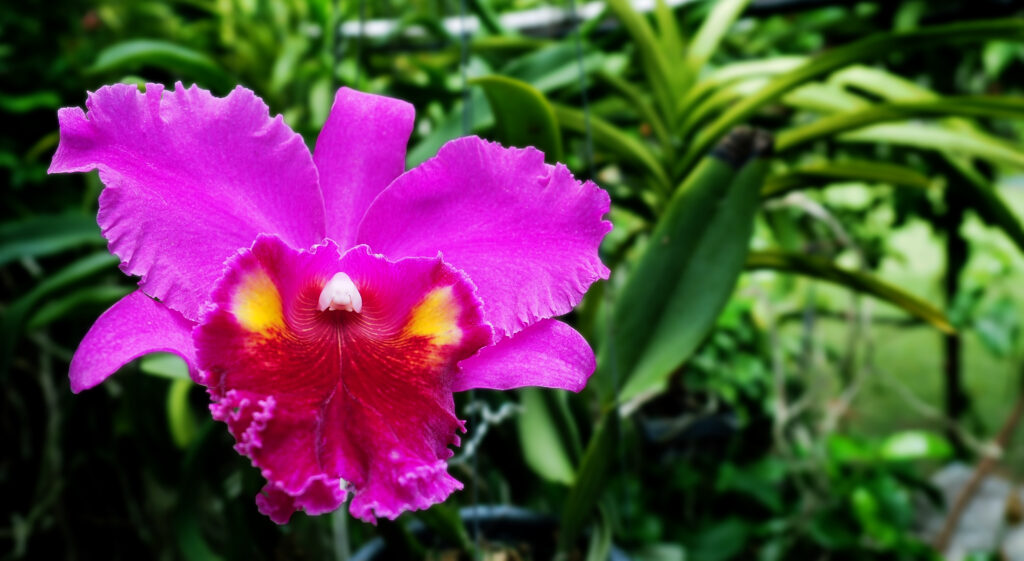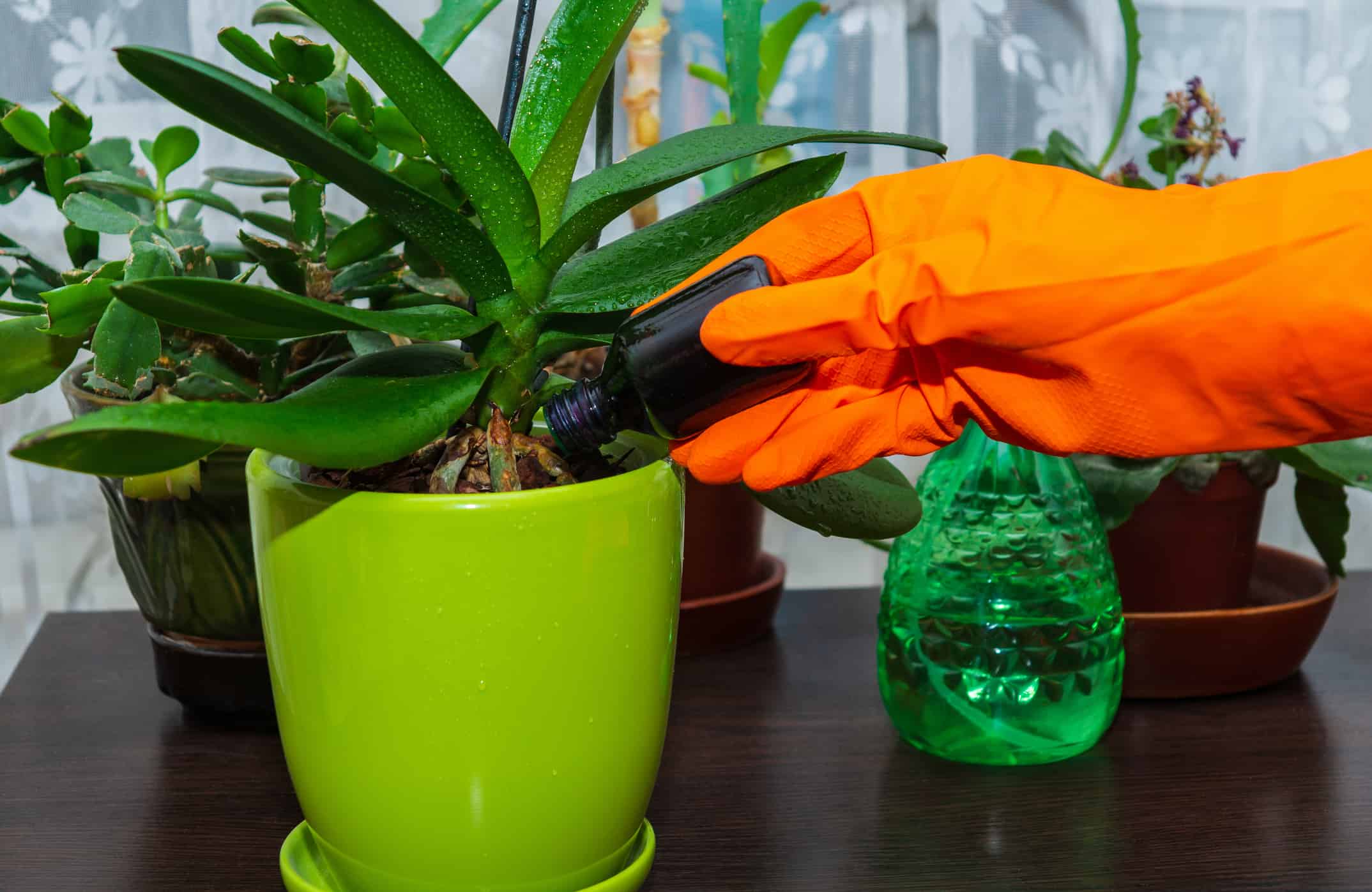When we talk about orchids, you’re probably picturing a tropical species blooming delicately from the bark of a jungle tree. And that makes sense, as the vast majority of orchids are tropical epiphytes! These orchids tend to make excellent candidates for growing indoors where the temperature is nearly uniform year-round. However, some subtropical and temperate species require cool-to-cold exposure during winter to trigger growth. These orchids typically won’t thrive when grown indoors in a year-round mild, uniform climate.
So, in this guide, we’ll set you up for success by explaining which orchids are best suited for indoor growing and everything you need to know to ensure they’ll thrive in your care. We’ll also briefly cover the Orchidaceae family in general before diving into specific indoor care requirements.
Alright, let’s jump in!
Orchids: Botanical Classification and Native Growing Environments
The Orchidaceae family contains almost 30,000 species grouped into almost 900 genera. Emerging on the Earth almost 120 million years ago, they started out as terrestrial plants. However, after millions of years, a large group evolved to thrive outside of the soil, clinging to rocks (lithophytes) and attaching themselves non-parasitically to the bark of trees (epiphytes). As epiphytes, the diversity of orchids skyrocketed.
Today, about 80% of all orchid species are epiphytes, generally inhabiting tropical and subtropical environments. These orchids are masters of arboreal life, with root systems adapted to intaking nutrients from the humid air and nutrient and water-storage structures called pseudobulbs designed to survive life outside of the soil. The vast majority of epiphytic orchids live in climates that are generally mild year-round, making them perfect candidates for indoor living.

Today roughly 80% of all orchid species are epiphytes, generally inhabiting tropical and subtropical environments.
©iStock.com/JillianCain
Growing Orchids Indoors: How to Succeed
Some orchids require cold to cold winter exposure to trigger spring growth and flowering. These species generally inhabit subtropical and temperate climates, where they enter winter dormancy and “wake up” during late winter-early spring, with new growth emerging after their winter rest. While you can grow these species indoors for part of the year, you’ll need to set them outside with a layer of leaf insulation for a period of time during the winter to trigger spring growth. This is true for most terrestrial orchids, like the non-mottled, cool-growing species in the Paphiopedilum genus.
In this guide, we’ll focus on genera of orchids that thrive year-round indoors, the most popular of which are Cattleya and Phalaenopsis orchids, which grow natively in tropical environments. Many species in these genera are often quite suited to beginner orchid growers.
Below, we’ll detail general care requirements for indoor orchid growing of tropical species. Note that you’ll need to hone these conditions more specifically to the species you’re growing, so always research the culture requirements for your particular plant.

Orchids in the
Phalaenopsisgenus are well-suited for indoor growing.
©PAUL ATKINSON/Shutterstock.com
Temperature
As a general rule, orchids that grow in tropical environments should not be exposed to temperatures below 65 degrees Fahrenheit. While they do need a year-round temperature dip at night of about 10-15 degrees in order to thrive and flower, this temp should remain above this 65-degree cut-off.
The upper limit of the temperature range will depend on what species you’re growing. For example, the popular horse phalaenopsis (Phalaenopsis equestris) thrives in daytime temperatures of about 80 degrees Fahrenheit and night temps of around 65 degrees.

can be grown indoors, thriving in about 80 degrees Fahrenheit daytime temperatures.
©Natalia van D/Shutterstock.com
Growing Orchids Indoors: Light Requirements
Light requirements vary by species, but generally, orchids that do well indoors year-round typically need moderate-to-bright, indirect sunlight. Growing in east-facing windows is often a great choice for indoor orchids. Some species, like tropical cattleyas, will also do well with gentle morning direct sun.
Watering Requirements
Many tropical species experience significant rainfall during the summer with a winter dry season. So, you’ll need to replicate these conditions indoors by watering the appropriate amount for the species in the summer and winter (rest period).
For example, the crimson cattleya (Cattleya labiata) thrives on consistent watering during its growing phase with morning misting if the indoor humidity is below 70%. During the winter, you’ll want to cut back to watering only enough to keep the growing substrate from drying out. If you mount your plants on a slab or bark, you’ll need to water or mist more frequently to combat the faster drying time.

The crimson cattleya (
Cattleya labiata) thrives on consistent watering during its growing phase.
©Fluke Cha/Shutterstock.com
Growing Orchids Indoors: Fertilizer Requirements
The final consideration for growing orchids indoors is fertilizing. The orchids suitable for year-round growing are typically epiphytic tropical species that benefit from frequent, lose-dose fertilizing that mimics how they obtain nutrients in the wild. Since these orchids don’t live in the soil, they don’t receive large amounts of nutrients. Instead, they tend to benefit from feeding “weakly weekly.”
You’ll normally aim for feeding 1/4-1/3 of the recommended dosage every week during the growing phase of a balanced orchid fertilizer. Feeding is cut back during the winter rest period to avoid root burn. Exact recommendations vary by species.

The orchids suitable for year-round growing are typically epiphytic tropical species that benefit from frequent, lose-dose fertilizing.
©iStock.com/VITALII BORKOVSKYI
The photo featured at the top of this post is © Summer 1810/Shutterstock.com
Thank you for reading! Have some feedback for us? Contact the AZ Animals editorial team.







